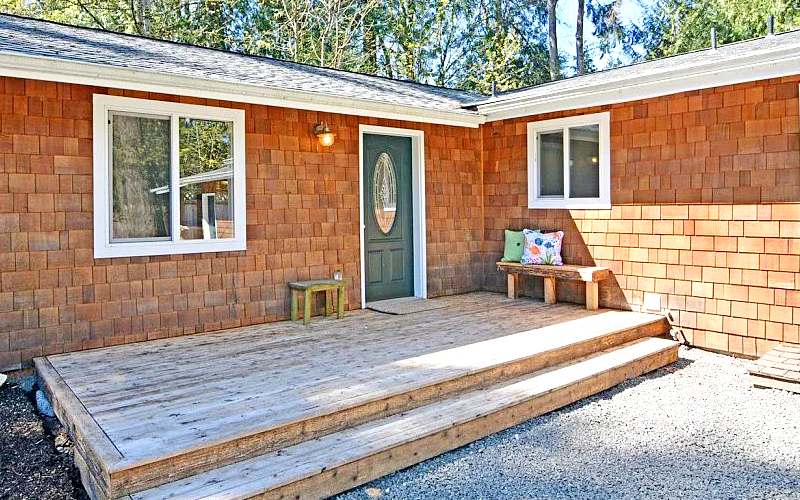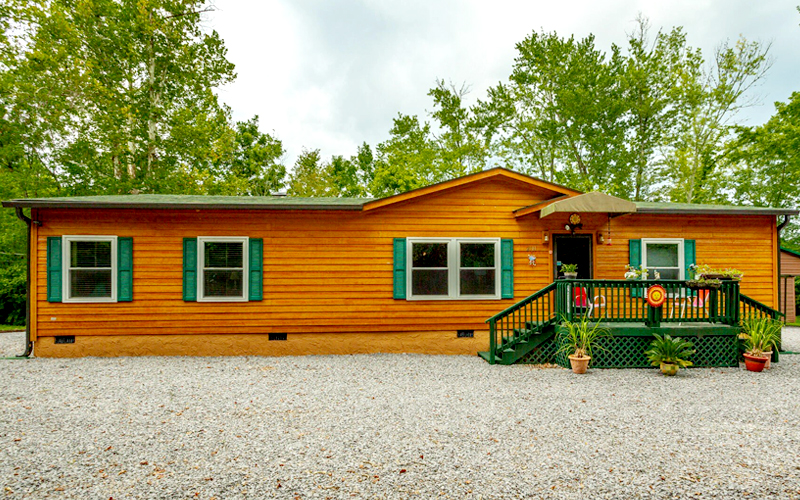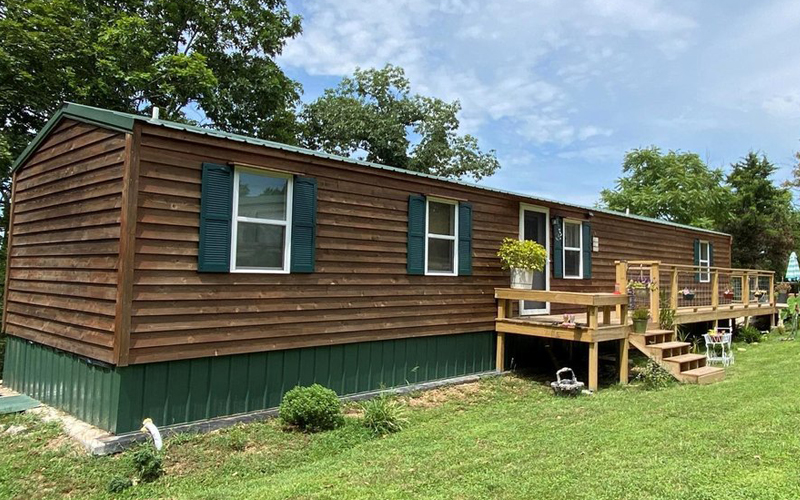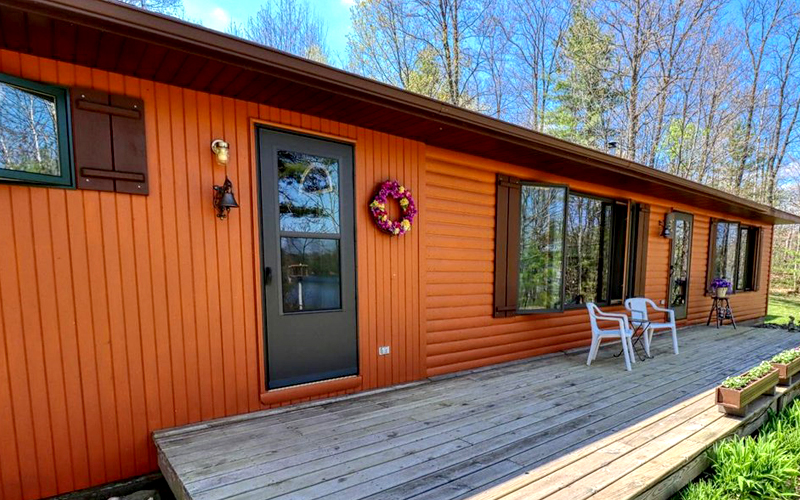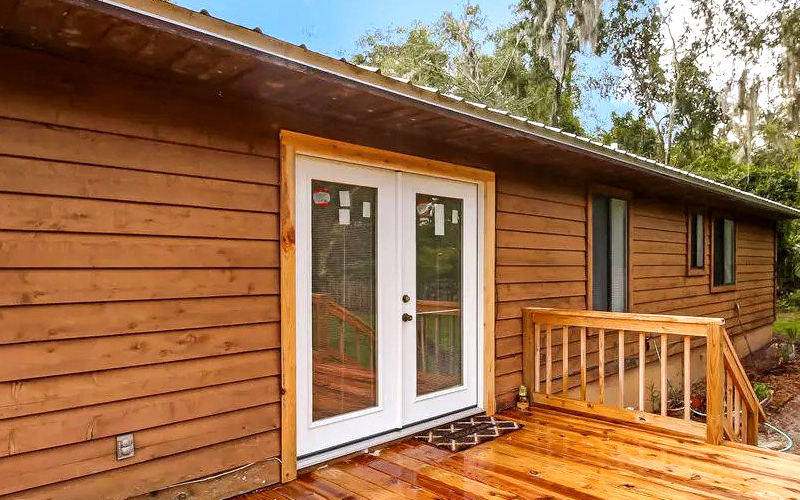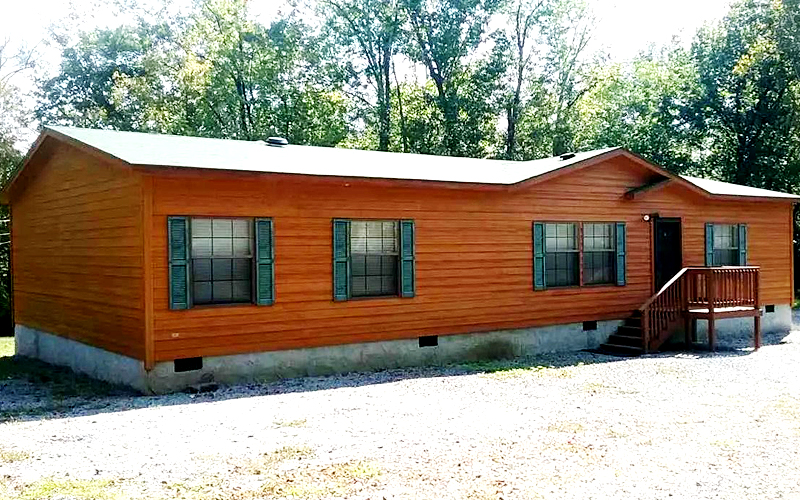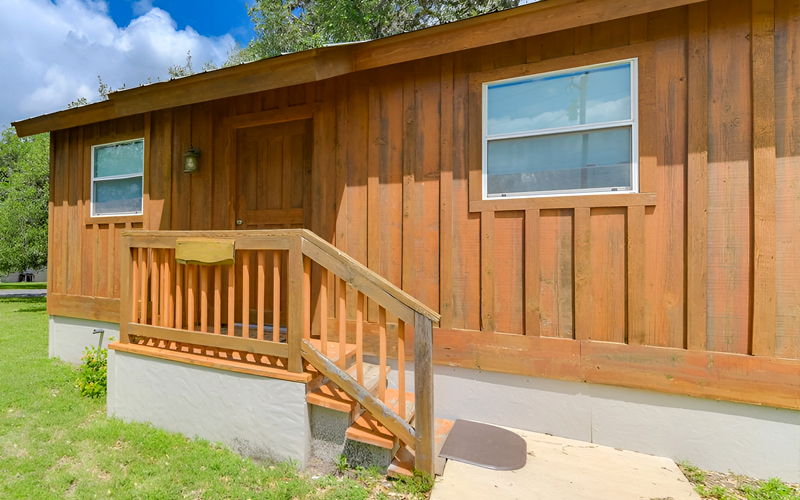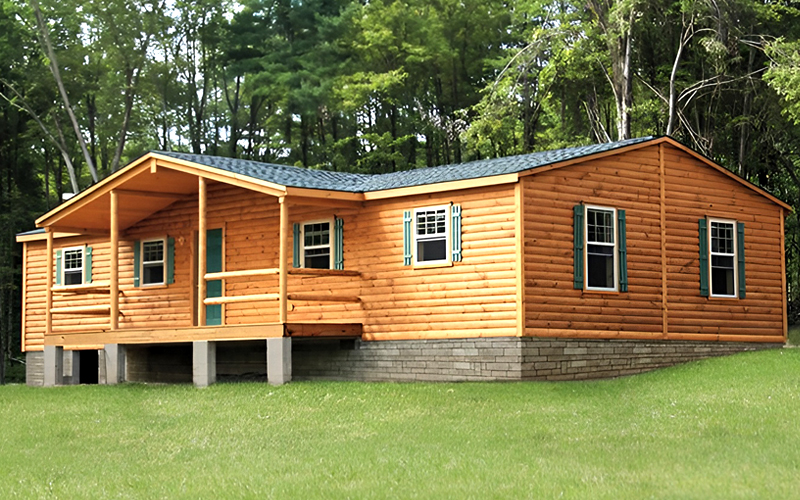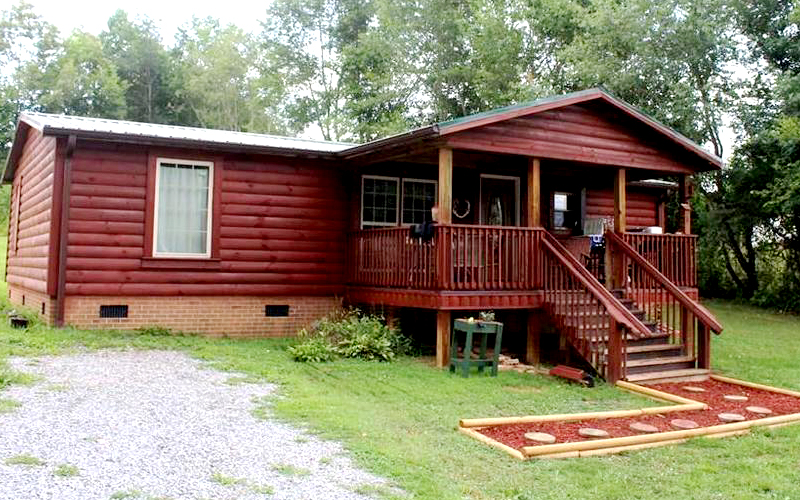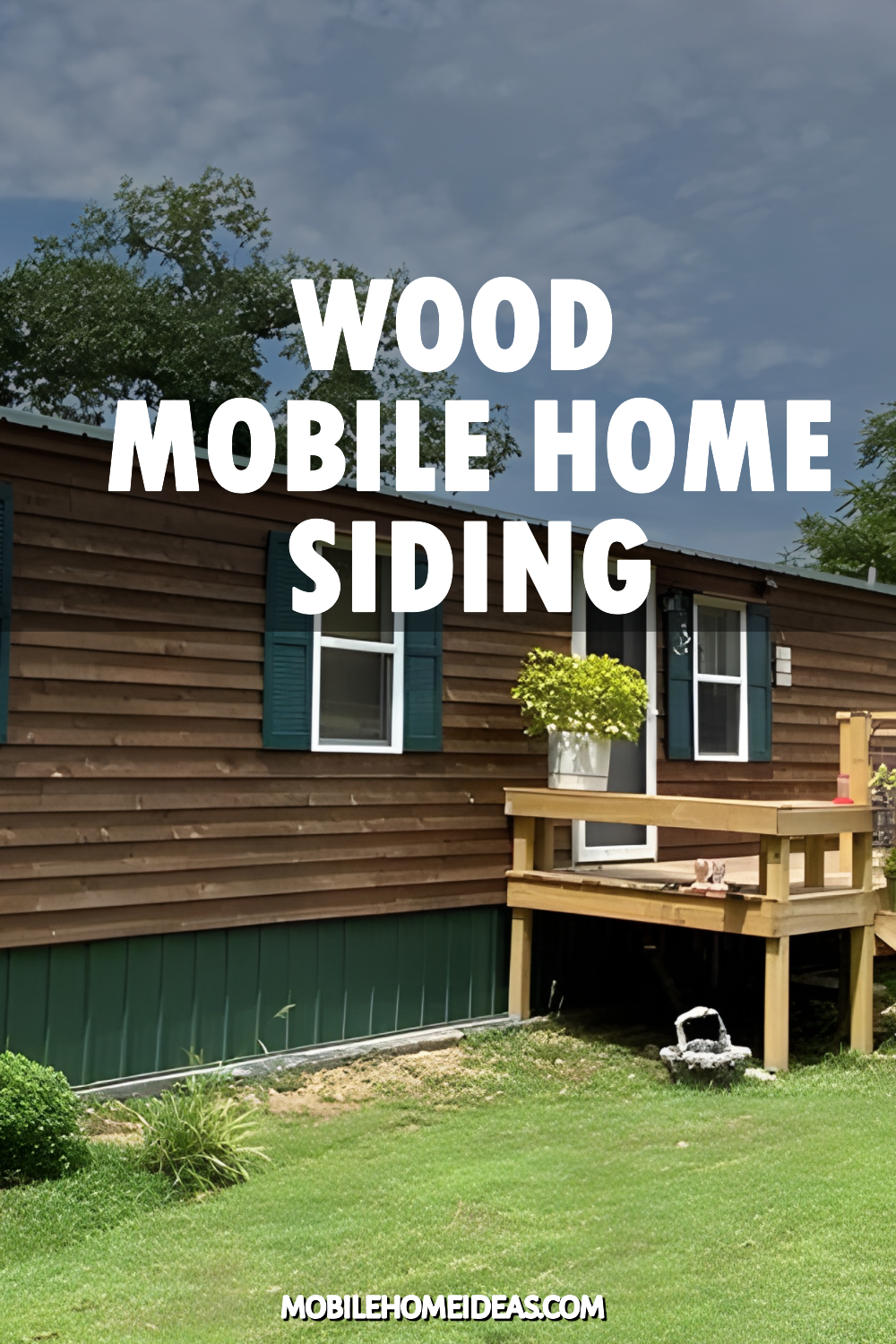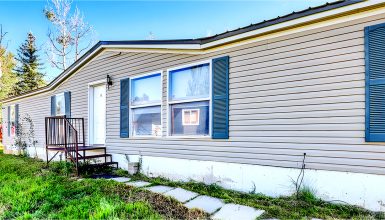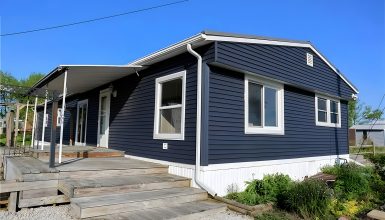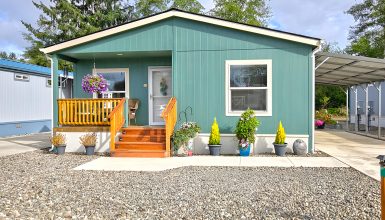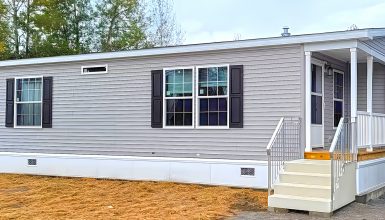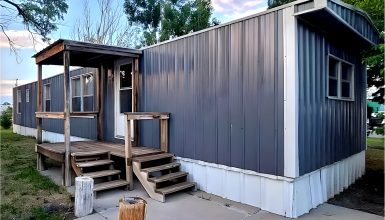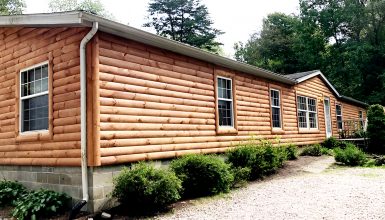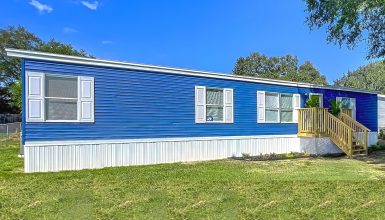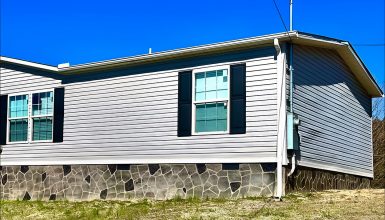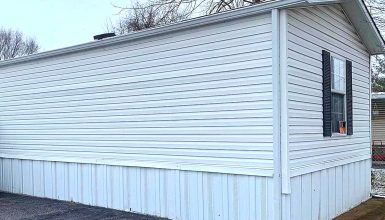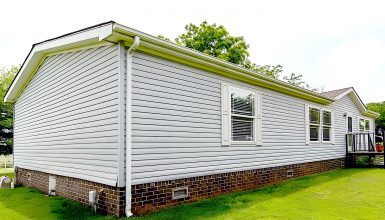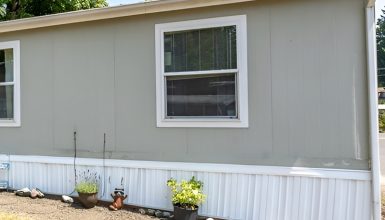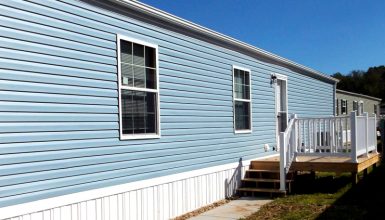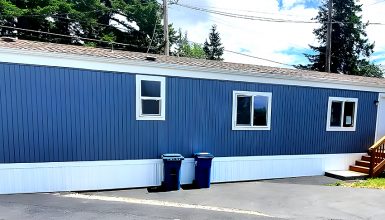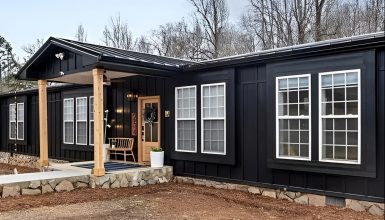Wood siding is a popular choice for mobile homes. Why? For starters, it gives a natural, cozy look that many love. But there’s more to it. Wood siding is not just pretty; it’s tough, too. It stands up against wind and rain and lasts years with proper care. And there’s a variety to choose from. Each type brings its style and strength. Some are super durable, while others are easy on the wallet. So, let’s explore types of wood siding for your manufactured home.
1. Cedar Shingles
Cedar siding is a top choice for those who love a classic look. These shingles stand out for their durability. They don’t rot easily, making them an excellent pick for homes in various climates. Cedar’s natural beauty shines in its rustic appearance, bringing a touch of the outdoors to your home. These shingles are also light so they won’t weigh down your mobile home. Plus, you can make them your own! Want a pop of color? Go ahead and paint them. Do you prefer a natural look? Stain them to bring out cedar’s rich, warm tones. They’re like a blank canvas for your home.
2. Pine Siding
Pine siding is the go-to for those watching their budget. It’s easy to find and won’t break the bank. Working with pine is a breeze. It’s friendly to both professionals and DIY enthusiasts. But remember, pine needs a little TLC. Regular maintenance is key to keeping it looking great. Painting or sealing pine siding helps protect it from the elements. This extra step ensures your pine siding stays looking fresh and lasts longer. It’s a small effort for a big payoff in curb appeal.
3. Spruce Siding
Spruce siding is another budget-friendly option. It’s a bit tougher than pine, giving it an edge in durability. It is a fantastic choice if you’re in an area that isn’t too humid. It handles drier climates like a champ. Like pine, spruce siding is easy to work with, making it a favorite for different styles of homes. Whether you’re updating an older mobile home or adding a personal touch to a new one, spruce siding adapts to your vision. It’s the unsung hero of wood siding – affordable, durable, and versatile.
4. Fiber Cement Siding
Fiber cement siding is like a superhero in the siding world. It looks like wood, but it’s way tougher. How? It’s a mix of wood pulp and cement. This blend is the secret to its strength. It stands up to pests and rots without breaking a sweat. Plus, it handles harsh weather like a champ. If you’re after that wood look but want something that lasts longer with less fuss, this siding is your go-to. It’s a smart choice for keeping your home safe and stylish.
5. Engineered Wood Siding
Engineered wood siding is the future of wood siding. It’s made by combining wood fibers with a binder, making it more stable than regular wood. No warping or splitting here! It’s super tough against the usual troubles that affect natural wood. Another cool thing? Most engineered wood siding comes pre-primed. This means it’s ready for paint right off the bat, saving you time and effort. It’s a win-win for anyone who wants the beauty of wood without the hassle.
6. Redwood Siding
Redwood siding is like the luxury car of siding options. It’s incredibly durable and has a natural defense against decay and bugs. Redwood stands out for its stunning appearance. Its rich color and grain patterns add a touch of elegance to any home. It’s more than just good looks, though. Redwood siding lasts long, making it a wise investment for your home. This siding is your perfect match if you want something high-end with natural beauty.
7. Board and Batten
Board and batten is all about timeless style. It uses wide boards spaced out with narrow strips called battens. This creates a pattern that’s both simple and eye-catching. It’s a classic choice for anyone who loves a traditional or rustic look. The best part? You can make it from different types of wood. Whether you choose cedar, pine, or another wood, board and batten siding adds charm and character to your home. It’s a style that never goes out of fashion.
8. Log Cabin Siding
Last but not least, let’s talk about the rustic charm of Log Cabin Siding. This one’s for all you nature lovers out there!
Log cabin siding is what exactly it sounds like – siding that gives your mobile home the look and feel of a log cabin. It’s like having a piece of the great outdoors at your doorstep. Imagine waking up each morning, looking at your mobile home, and feeling on a constant camping adventure!
But here’s the twist: You’re not using full logs. Instead, you’re using siding milled to look like logs. It’s a way to get that cozy log cabin style without the structural challenges of using full logs.
The charm of log cabin siding isn’t just about its looks. It’s also about variety. From smooth to hand-peeled textures and different wood species like cedar or pine, there are plenty of choices to cater to your taste.
And when it comes to durability, log cabin siding holds its ground. Proper care and maintenance can last long, enduring the elements just like an authentic log cabin.
Tips for Choosing a Wood Siding
Now, we’ve explored various wood siding options for mobile homes. Let’s talk about factors you must consider before choosing the best one.
1. Climate
First and foremost, think about where your mobile home lives. If you’re in a damp climate, you’ll want wood siding that can handle moisture. If you’re basking in the sun most of the year, you need a wood siding that won’t mind soaking up some rays.
2. Structural Integrity
Check out the condition of your mobile home. Is it as robust as a young oak tree, or does it have a few more years on it? Older mobile homes may need lighter wood siding to maintain structural integrity. In contrast, newer models can handle something more substantial.
3. Maintenance
Some wood sidings need more care than others. Are you up for regular staining and sealing, or do you prefer a hands-off approach? Your lifestyle and how much time you want to devote to maintenance will heavily influence your decision.
4. Aesthetic Appeal
Here’s the fun part! Which wood siding makes your heart sing? Cedar shingles’ rustic vibes? Or perhaps the modern simplicity of fiber cement siding? Always consider your style and how your choice will enhance the beauty of your mobile home.
5. Budget
Lastly, we have the budget talk. Quality wood siding is an investment, but the costs can vary. Do some number crunching and determine which options fit within your financial comfort zone, considering installation and upkeep costs.

